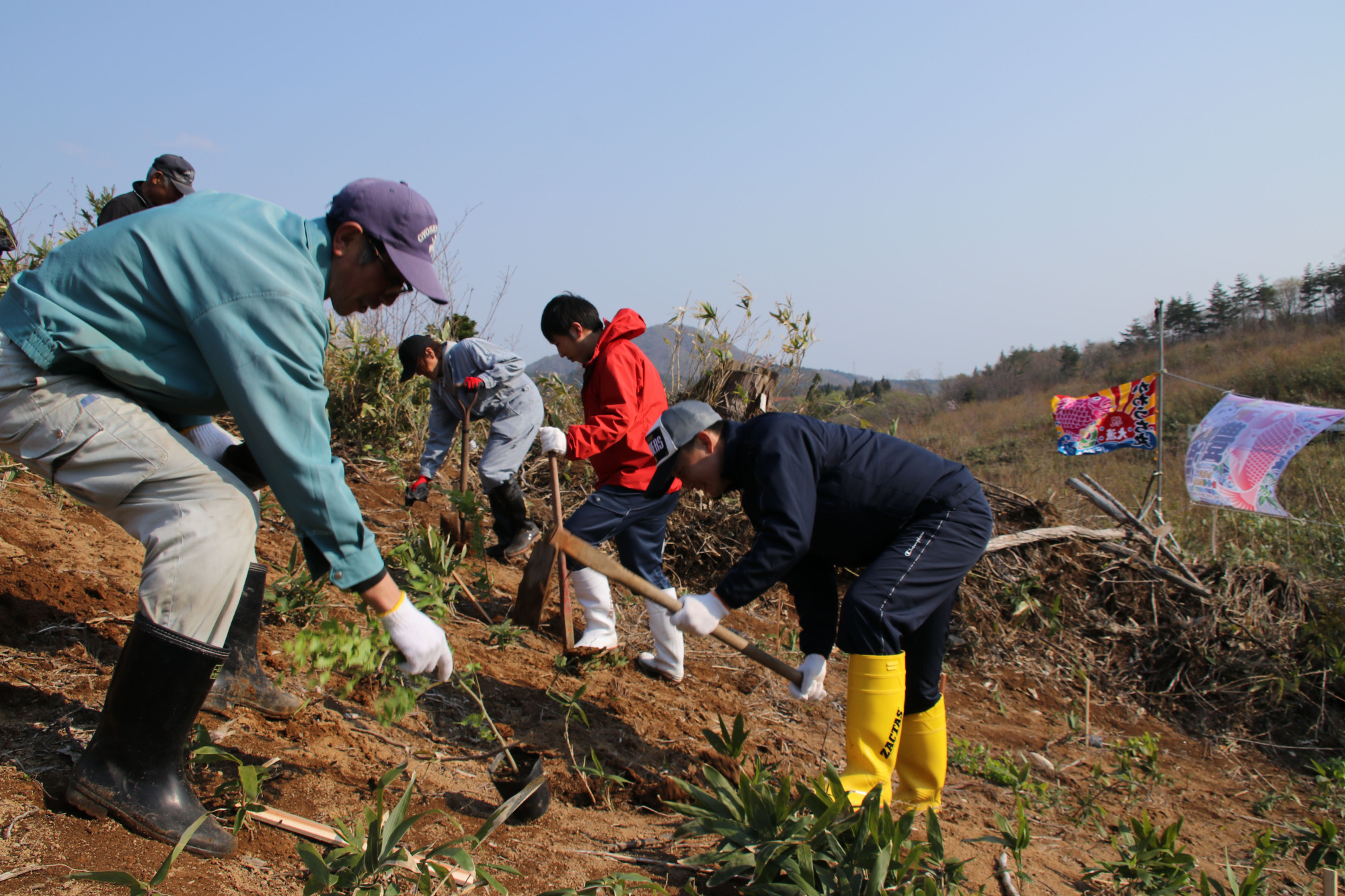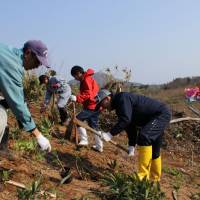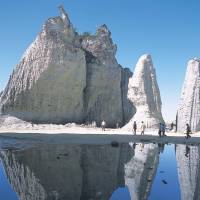The city of Mutsu is located at the tip of the Shimokita Peninsula in Aomori Prefecture, the northernmost part of Japan's main island, Honshu.
Earlier this year, Mutsu — with a population of about 60,000 — was selected by the Ministry of Land, Infrastructure, Transport and Tourism as one of 32 model cities for rural revitalization and compact city strategy.
As is common in many other rural communities, its population is on the decline, but Mutsu Mayor Soichiro Miyashita is focused on how the city can be both small and attractive.
He believes attracting a visiting or transient population to offset the decline is a shortsighted economic policy that would not contribute to making a better community.
"Creating new values and culture is what is important. Time is an indispensable factor here," Miyashita said.
Surrounded by the sea and mountains, Mutsu is blessed with both forest and marine resources.
The area is famous for scallops that have been harvested in Mutsu Bay for over 60 years. In general, scallops filter over 300 liters of water per day and it takes three years for them to reach adulthood. The quality of the water determines the quality of the scallops that are nurtured by the runoff from the mountain forests.
The fishermen of Mutsu are very conscious of the blessing of mountains and satoyama, the village woodlots existing between natural forests on mountainsides and villages in the flatlands.
Forests make up 80 percent of the Shimokita Peninsula's land. The heavy winter snow melts slowly through layers of nutritious leaf mulch into the ground. The mineral-rich water runs into rivers and eventually reaches Mutsu Bay where the scallops are cultivated.
Unlike virgin forests deep in the mountains and out of reach, satoyama are most effective as environmental resources when people tend and manage them.
With this in mind, the city offers forestlands that have been left untended for a long time to fishermen to plant new trees. Through this, the scallops are nurtured in the water from the forests partially created by the fishermen themselves, completing an environmental cycle within the community.
Mutsu has also been harvesting sea urchins for more than 120 years. Earlier this month, the city organized an event that it has dubbed Geo Dining. This was the first of a series of gastronomic events, and used locally harvested sea urchins in almost all of the dishes served.
It was held at Hotokegaura, an array of fascinating rock formations shaped by beating waves and fierce wind and rain. The formations stand along the west coast of the Shimokita Peninsula at the entrance of Mutsu Bay.
Hotokegaura is a geological site that belongs to Shimokita Geopark, one of the 43 geoparks certified as a Japanese Geopark by the Japanese Geopark Committee.
In the first Geo Dining event, renowned chefs from Mutsu and Tokyo prepared sophisticated courses, using sea urchin and other local delicacies. The guests, including invited members of the media, enjoyed the gourmet meal in the dynamic surroundings of the park.
"Such events allow guests to appreciate the environment and flavors that no other place can offer," Miyashita said. For more effective and sustainable regional promotion, he suggests that it is important to present "time" that is encased in the location and product.
Another notable local project starting soon is the production of citizens' wine. Mutsu is located at the center of the wine belt of the northern hemisphere and its climate is perfect for growing grapes.
Mutsu has been home to a privately owned winery for the last 15 years. However, the unique twist on citizens' wine is that city residents will grow the grapes in their family gardens. The grapes will then be collected by the winery and made into wine.
This type of story helps consumers appreciate not only the taste, but also the time and effort put in by Mutsu people. Instead of professional farmers, it paints a vibrant image of everyday people, no different from consumers, growing grapes in their own backyards.
"Creating values and cultures that have been through the refinement of time, which has been nurtured by the earth and people, is what we are trying to do," Miyashita said.
This series introduces municipalities and local companies promoting the beauty and excellence of deep Japan.






















With your current subscription plan you can comment on stories. However, before writing your first comment, please create a display name in the Profile section of your subscriber account page.